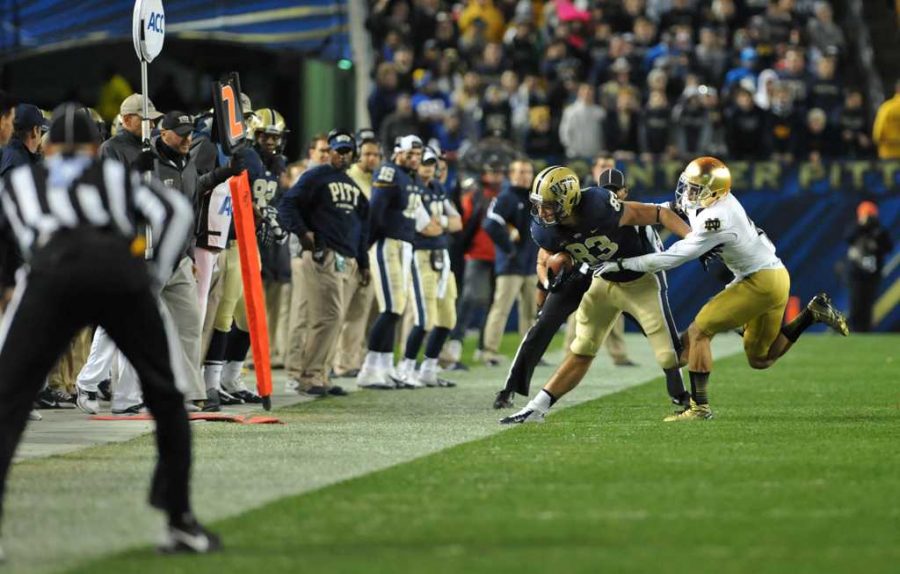Two weeks ago, I wrote a column calling for Pitt and West Virginia to renew the Backyard Brawl.
Last Thursday, by pure happenstance, fate intervened — in the form of Pitt and WVU AD’s Scott Barnes and Shane Lyons, respectively — and made my dream come true. The Panthers will now play the Mountaineers four times, alternating home games from 2022 to 2025, with the first game coming on Sept. 17, 2022 at Heinz Field.
Combine this slate of games with the Penn State series from 2016 to 2019 and a Notre Dame game in 2020, and Pitt has one of its top three rivals on the docket for nine of the next 10 years.
“Between Penn State and West Virginia, we would like to have ultimately one game a year against a rival,” Barnes said on Saturday in Akron.
For a fan base still trying to find its footing, this is just what we needed. Nothing puts butts in seats quite like rivalries — besides success, of course.
“If we are going to build a strong football program, sustained over time, rivalries are part of that,” Barnes said. “It gives the fans something to look forward to … it’s part of building a program.”
Pitt’s recent attendance numbers further illustrate the importance of rivalry games.
The top attendance mark from 2014 belongs to the Sept. 20 Iowa game, with 48,895 seats filled. At the time, the Panthers held their first 3-0 start since 2009. After that game, Pitt’s attendance never topped 45,000 in 2014. For a stadium with 65,000 capacity, the high point of attendance standing at 75 percent is a cry for improvement.
Pitt finished 6-6 in 2014, with zero home games against a rival school. In 2012, Pitt also finished 6-6 with zero home games against a major rival. The highest attended game that year was on Sept. 15, when 48,032 watched the Panthers upset No. 13 Virginia Tech.
In both of those mediocre years, Pitt managed roughly 41,000 fans a game.
But between 2009-2011, Pitt had at least one single-game attendance better than 60,000, while average yearly attendance was at least 5,000 people higher.
And in all those years, Pitt played a rival, was pretty good, or both.
Pitt went 10-3 and ranked as high as No. 8 in the country in 2009, and despite the Backyard Brawl taking place in Morgantown, Heinz Field averaged a home attendance of 53,437. Pitt was ranked No. 15 in the preseason in 2010, but fell out after week one. Undoubtedly boosted by a West Virginia matchup at Heinz field, attendance still averaged a robust 52,165.
Since then, average attendance hasn’t crossed 50,000.
Rivalry games clearly push those numbers higher. Pitt hasn’t played Penn State since 2000, but the home attendance average against West Virginia or Notre Dame since 2009 has been a whopping 64,121 people. That’s 98 percent of capacity.
In fact, Pitt’s last sellout was in 2013, when Pitt upset No. 24 Notre Dame 28-21.
And in the next game that year, a ho-hum ACC matchup with North Carolina by a Panther team out of contention for the Coastal division title, Pitt had its first home attendance figure of more than 50,000 for a non-rivalry game— since 2010 against Rutgers.
A big home game against a rival doesn’t just spike attendance for that game. If Pitt wins, it’ll push attendance up for the next game, too. And maybe the next game as well.
Barnes is on the right track to creating a program, complete with success and fan interest, by scheduling at least one annual rivalry game starting next year.
If Pitt rebuilds our rivalries, the people will come.



